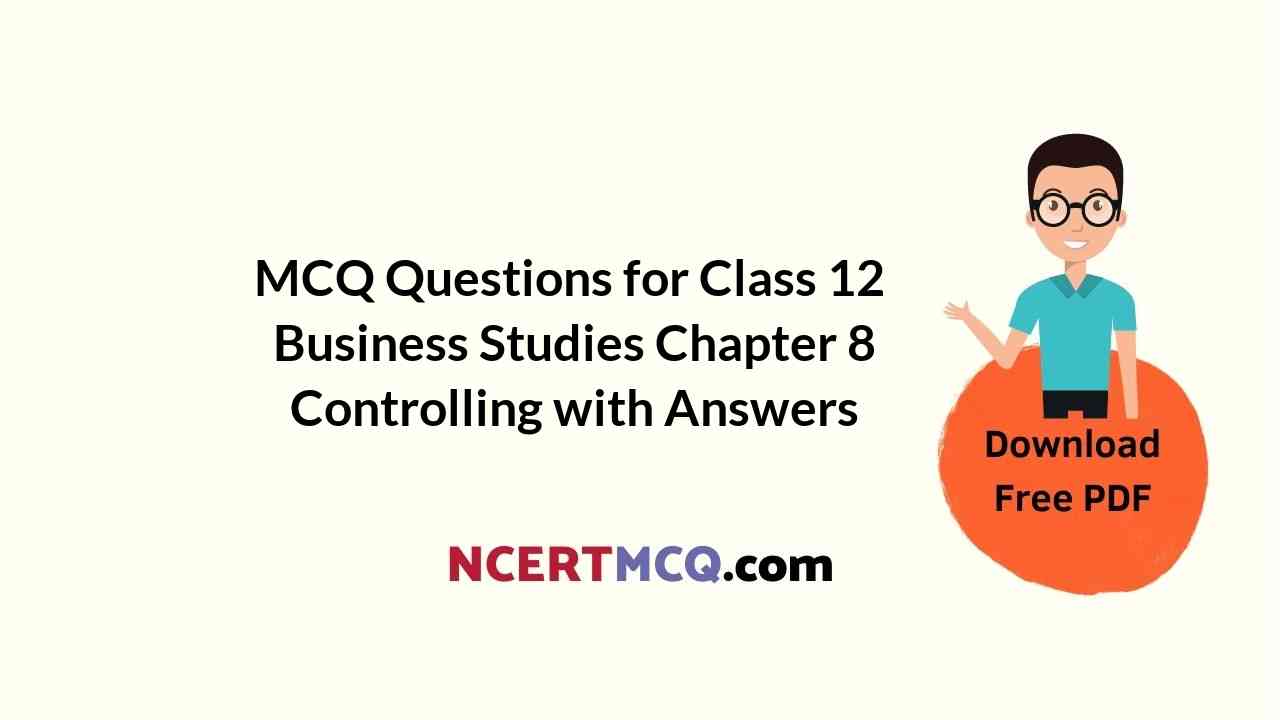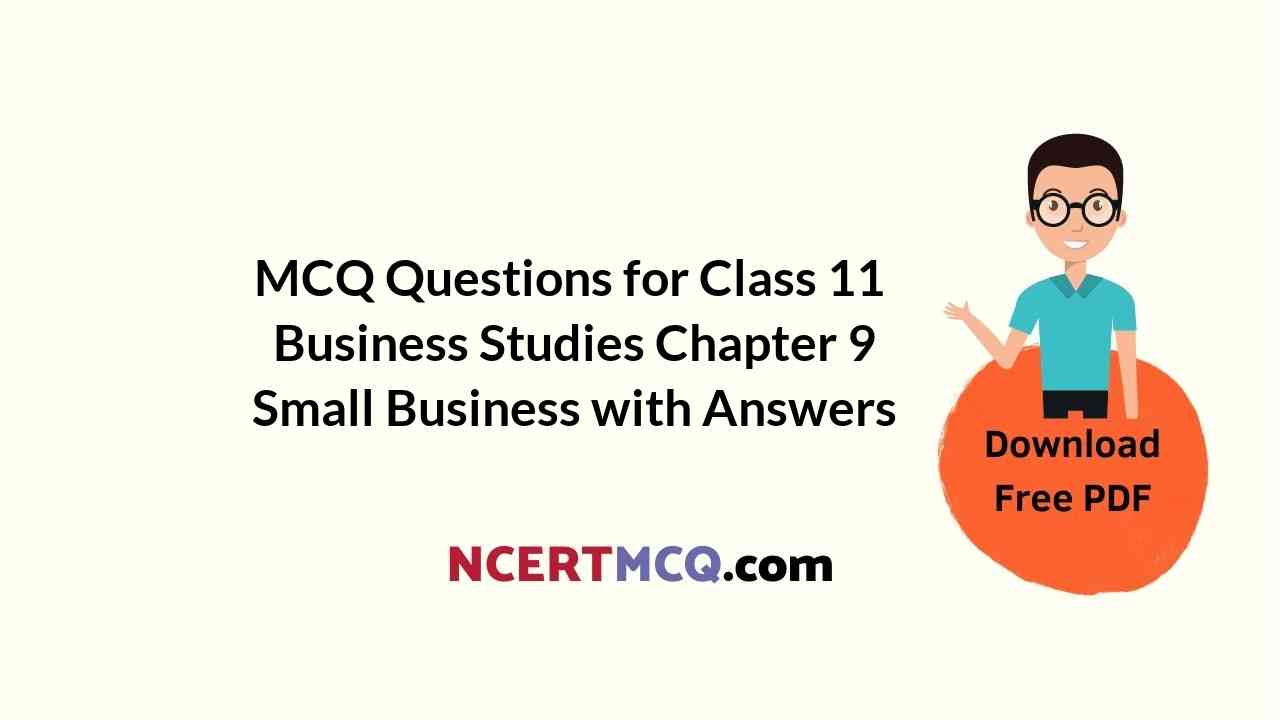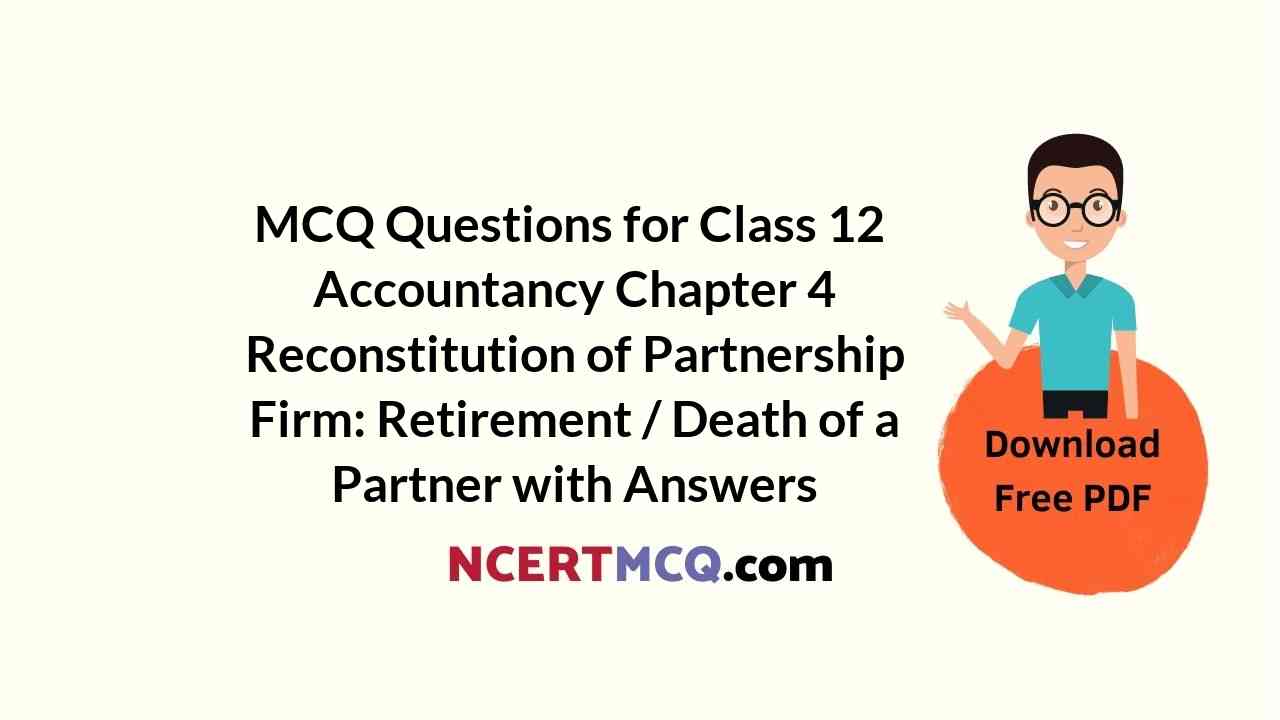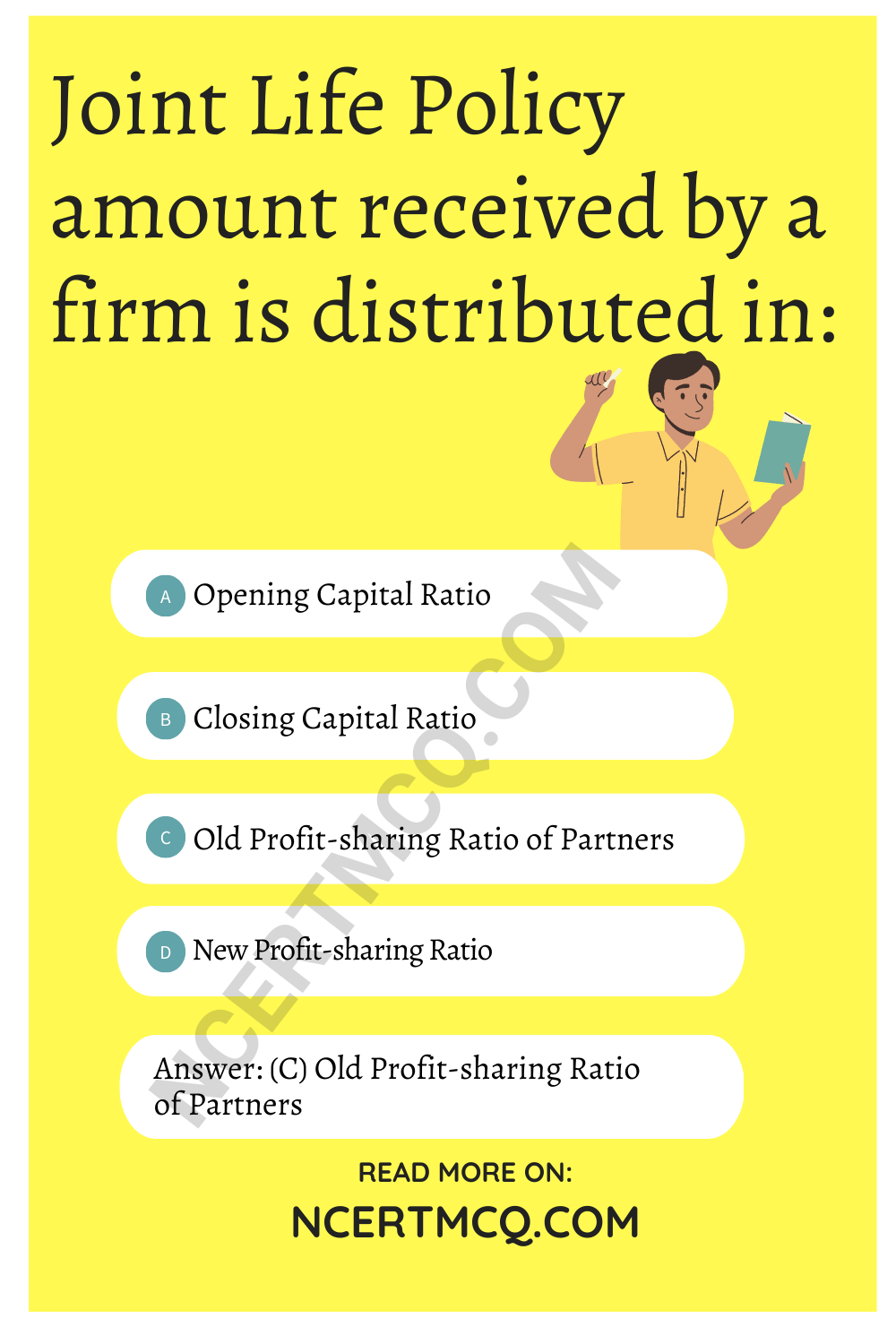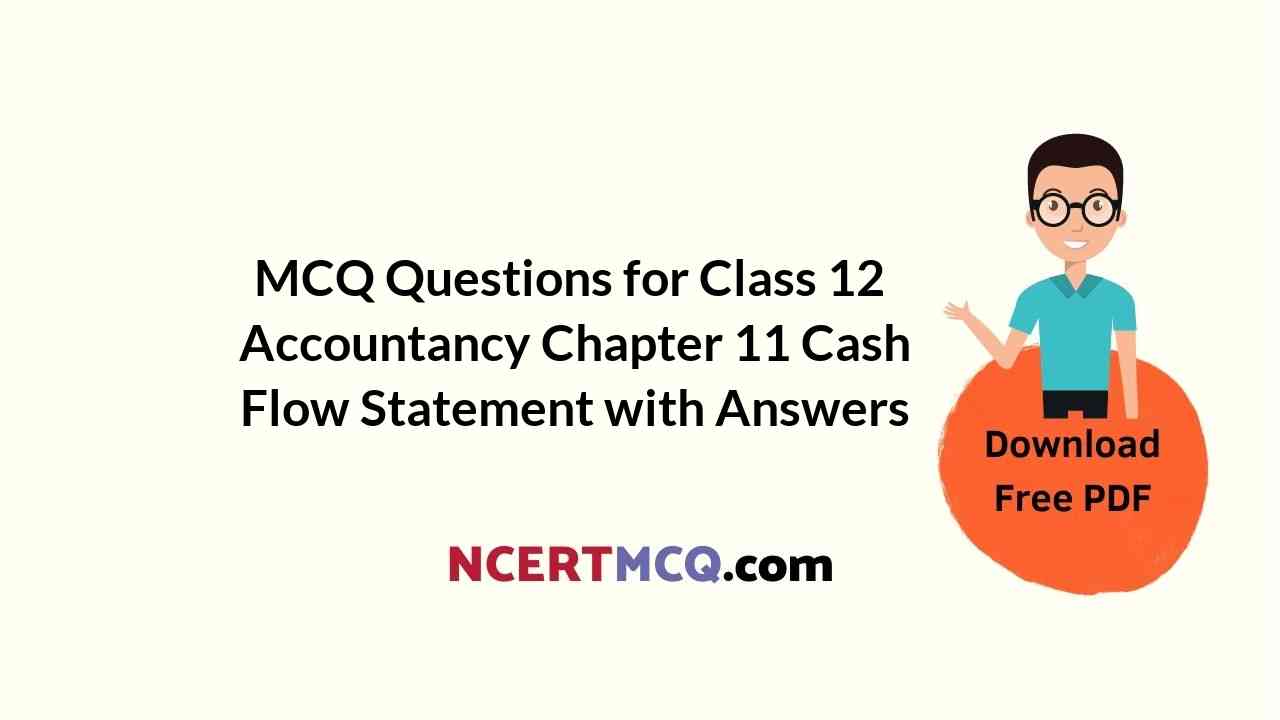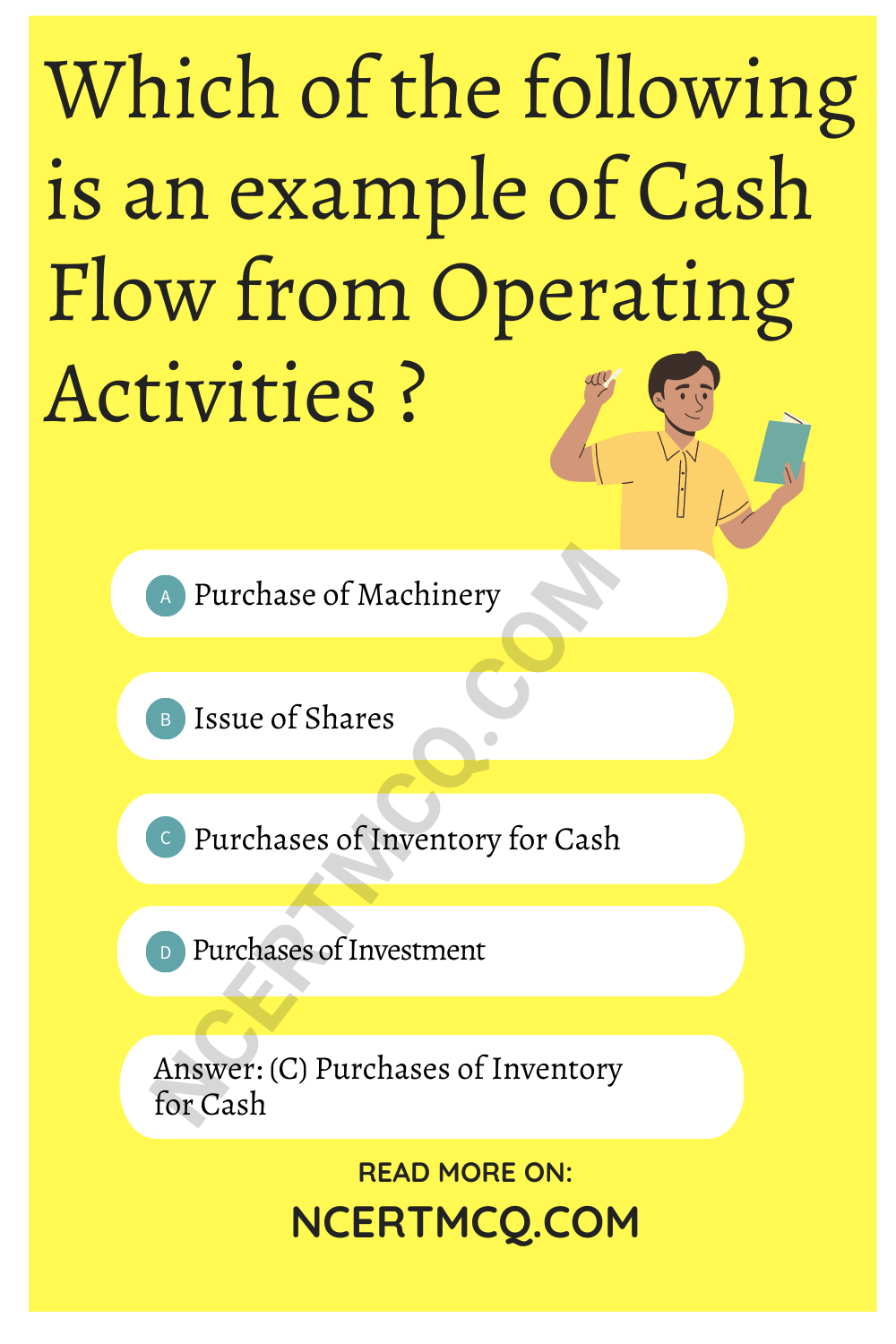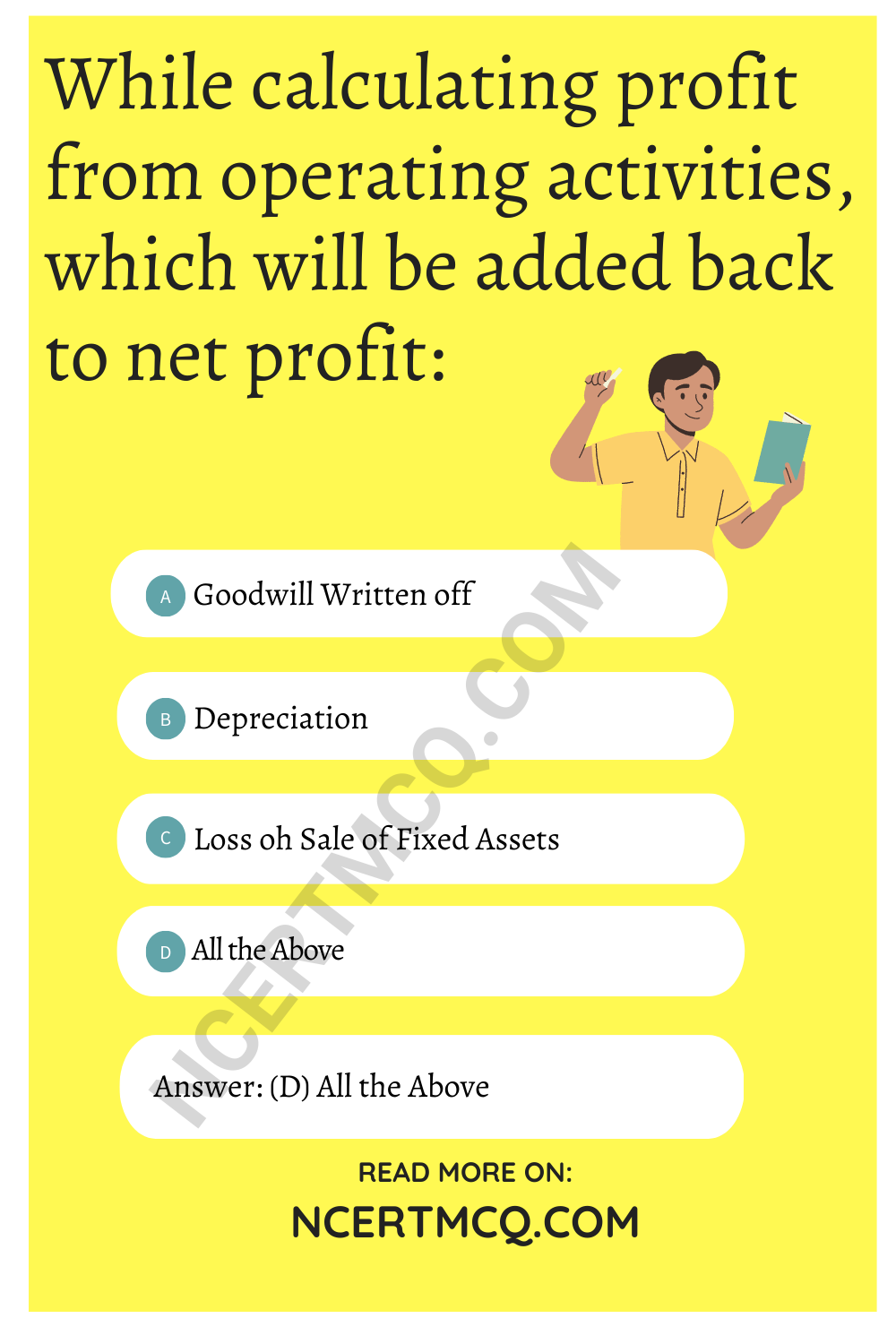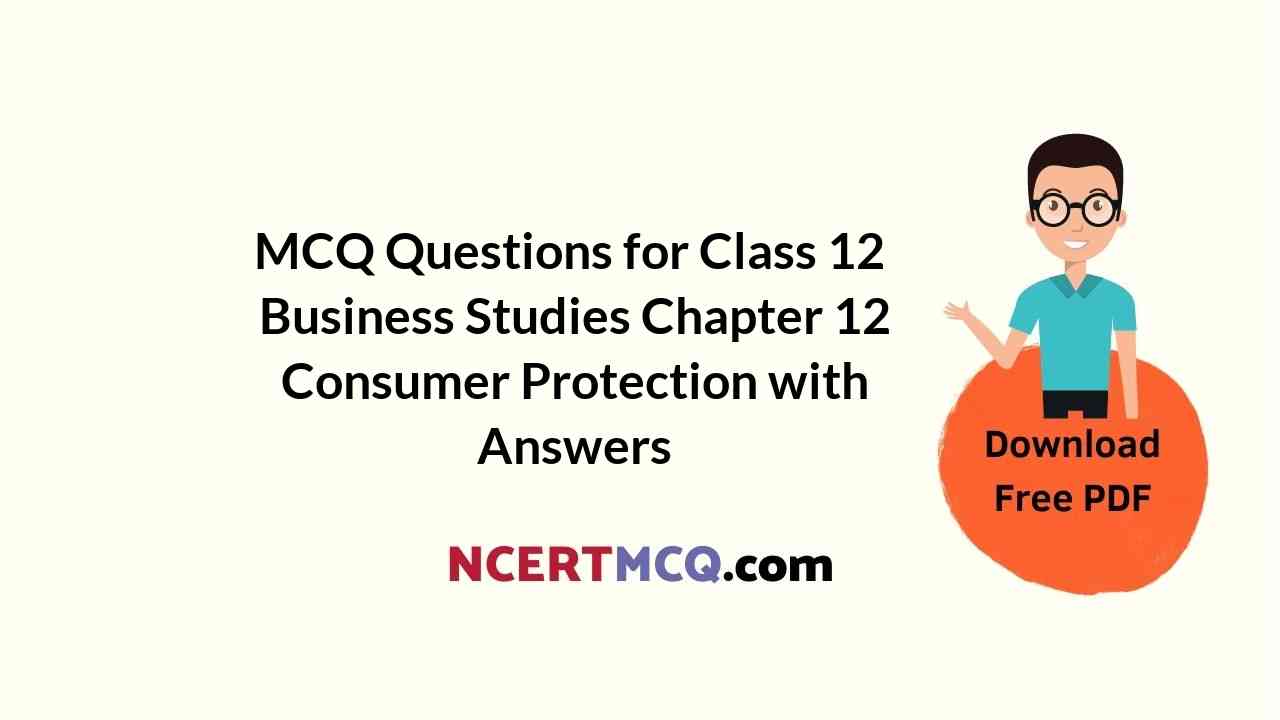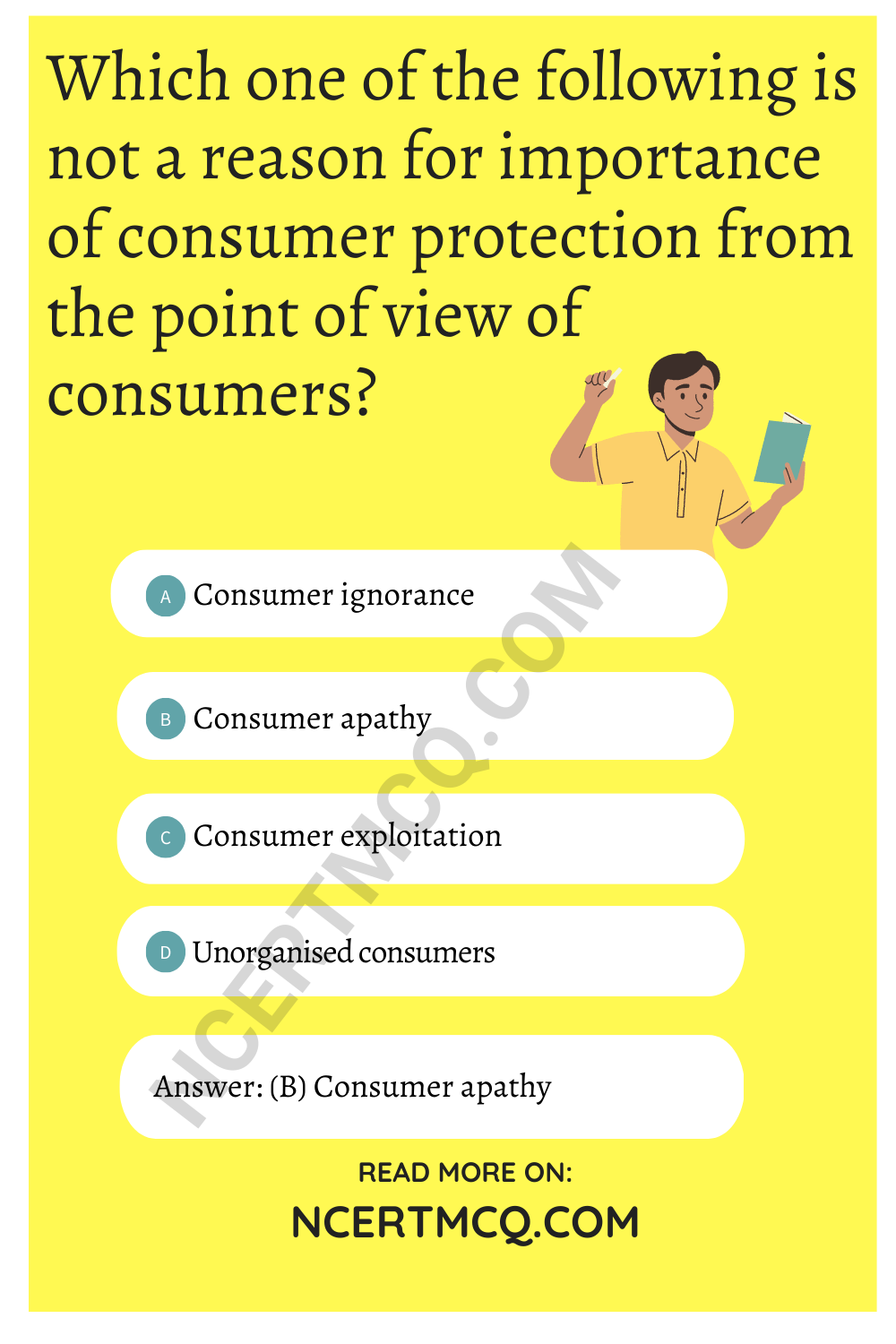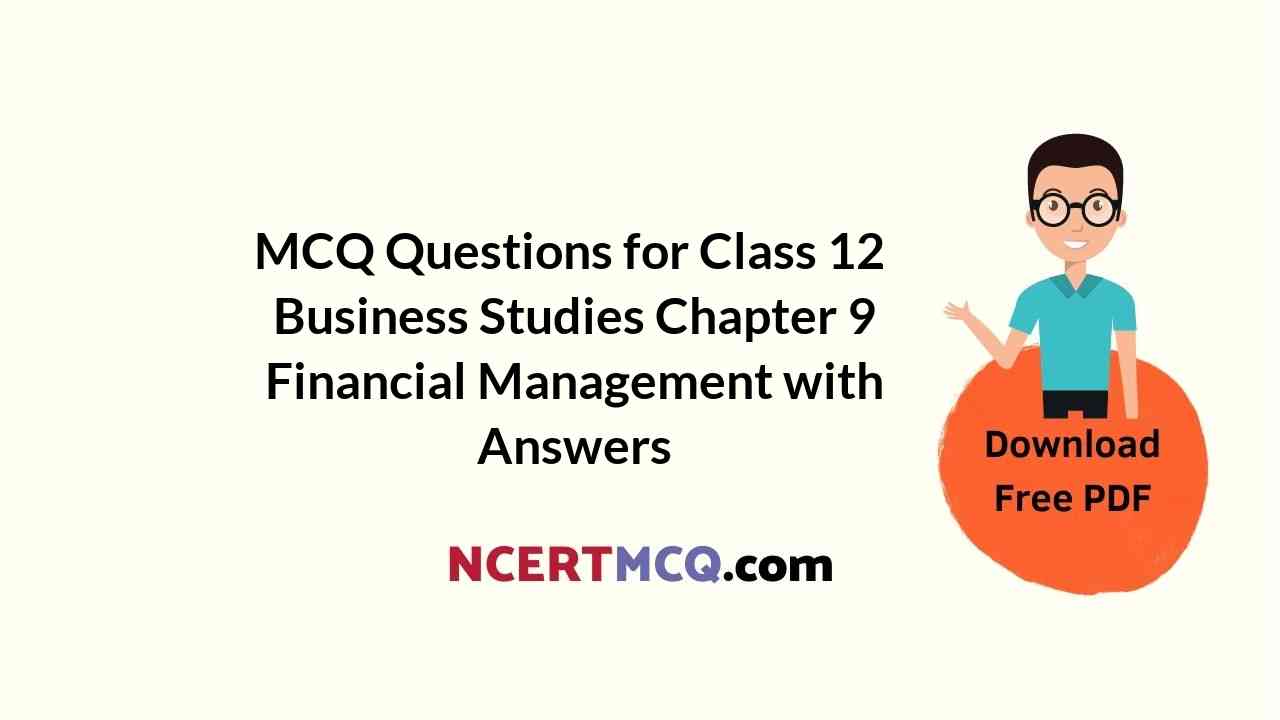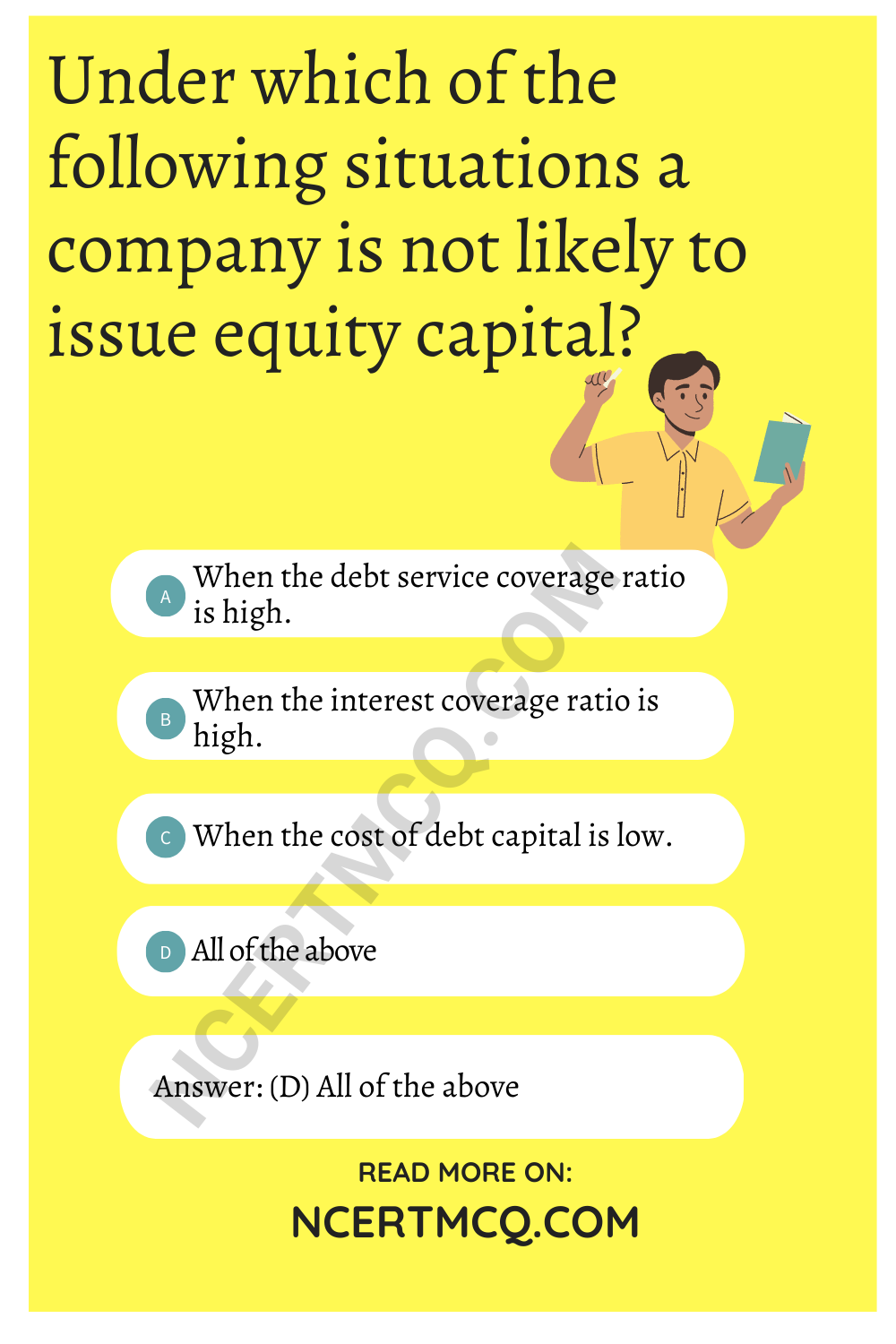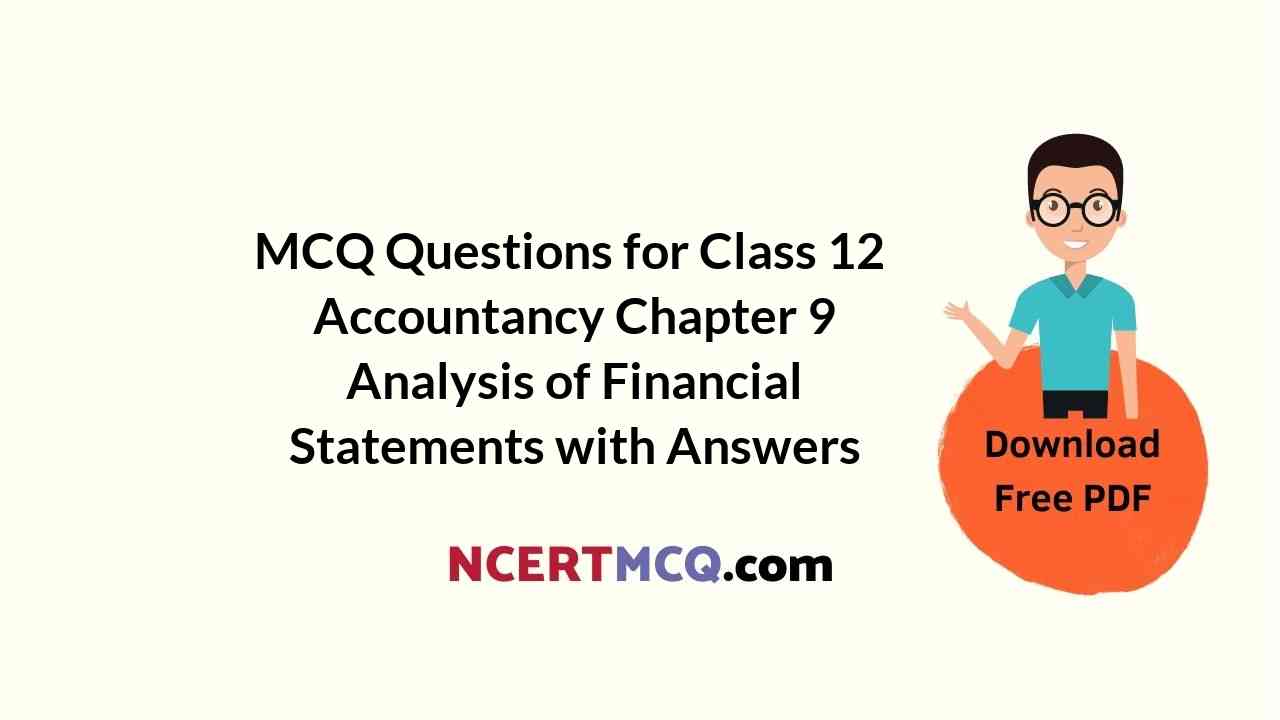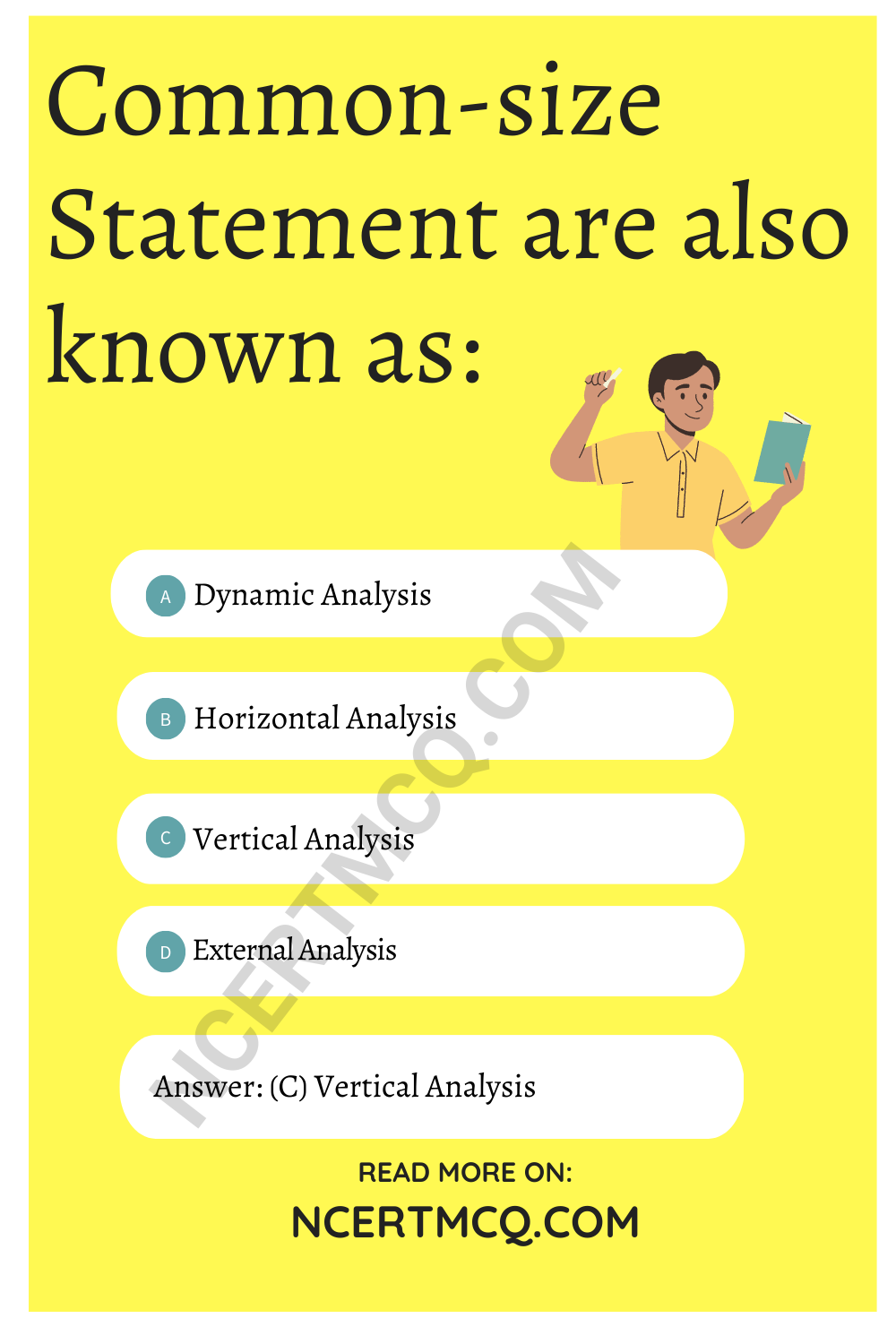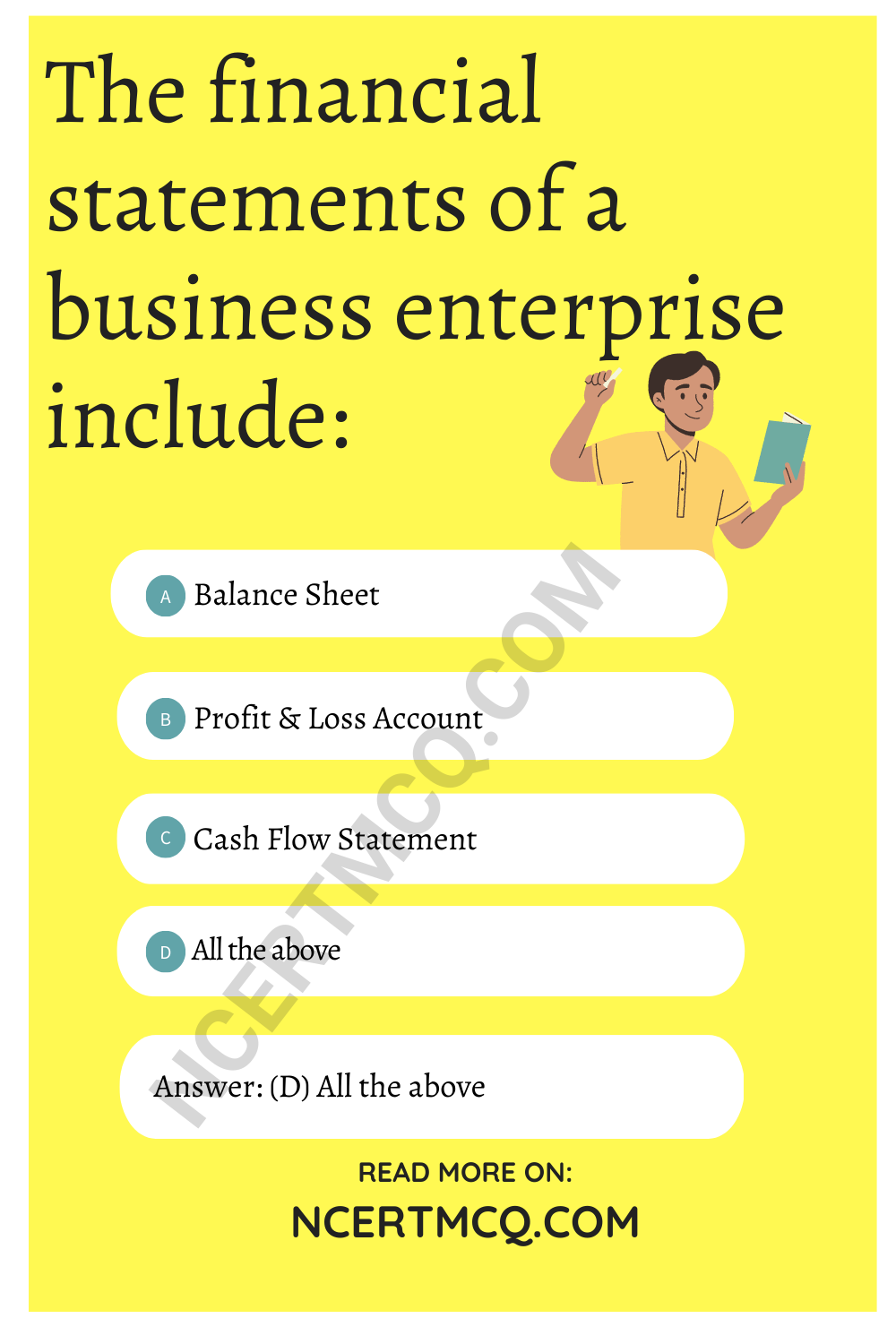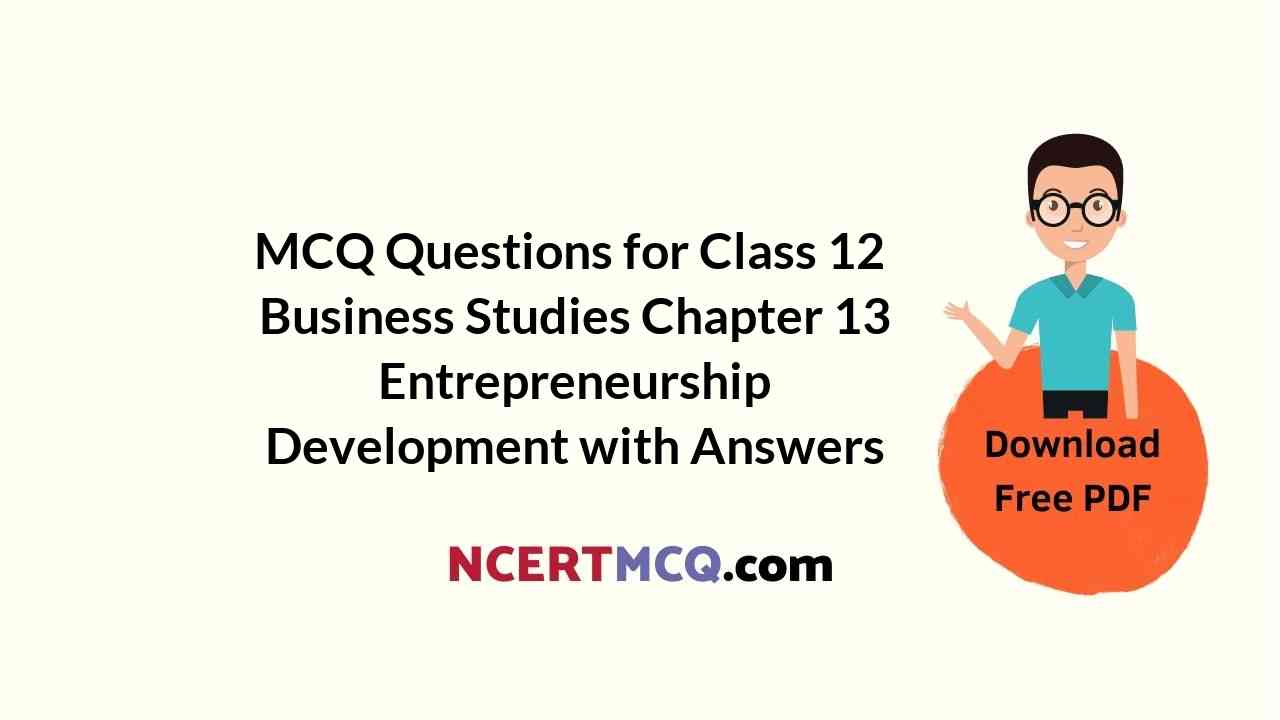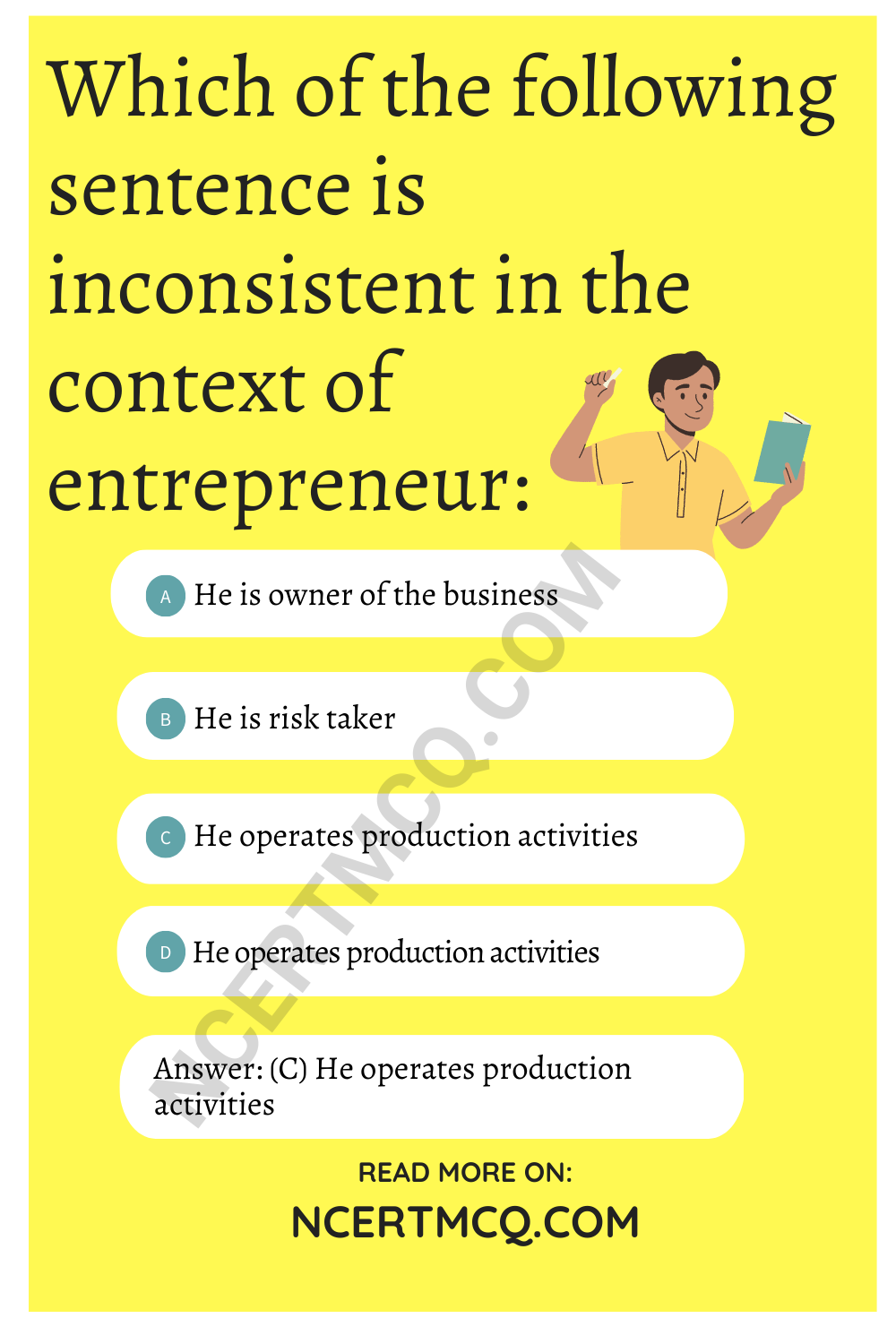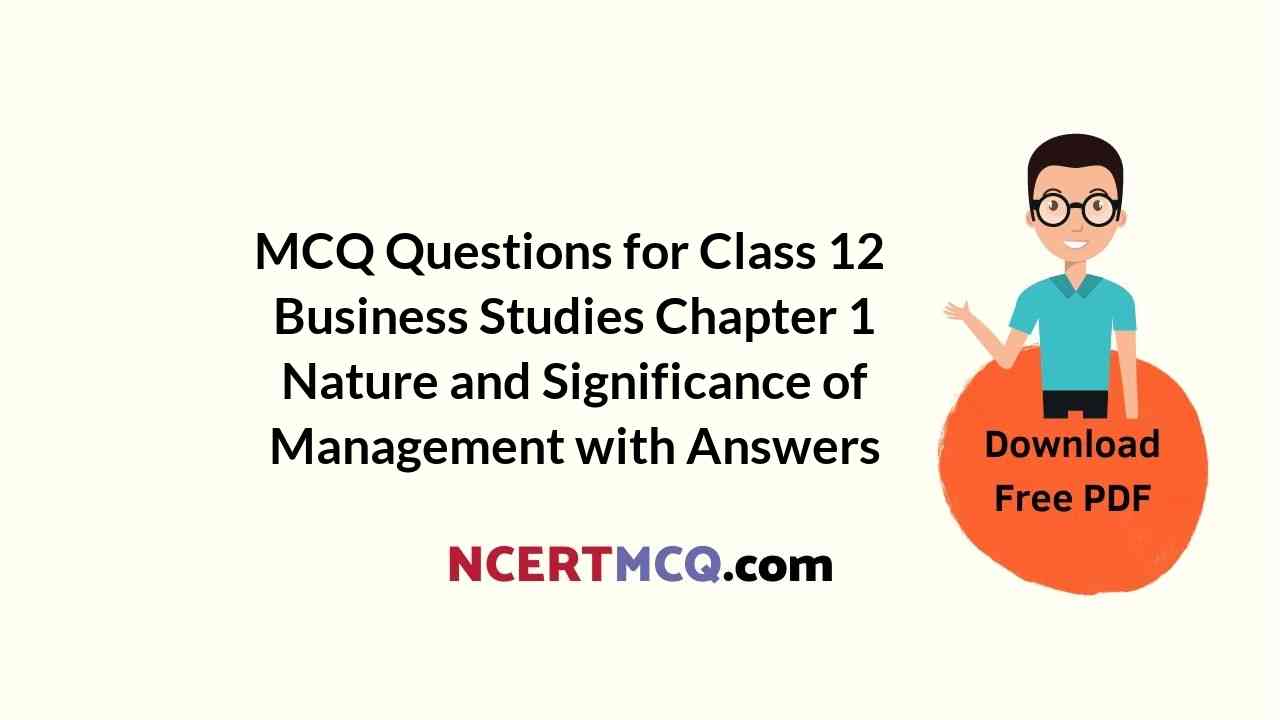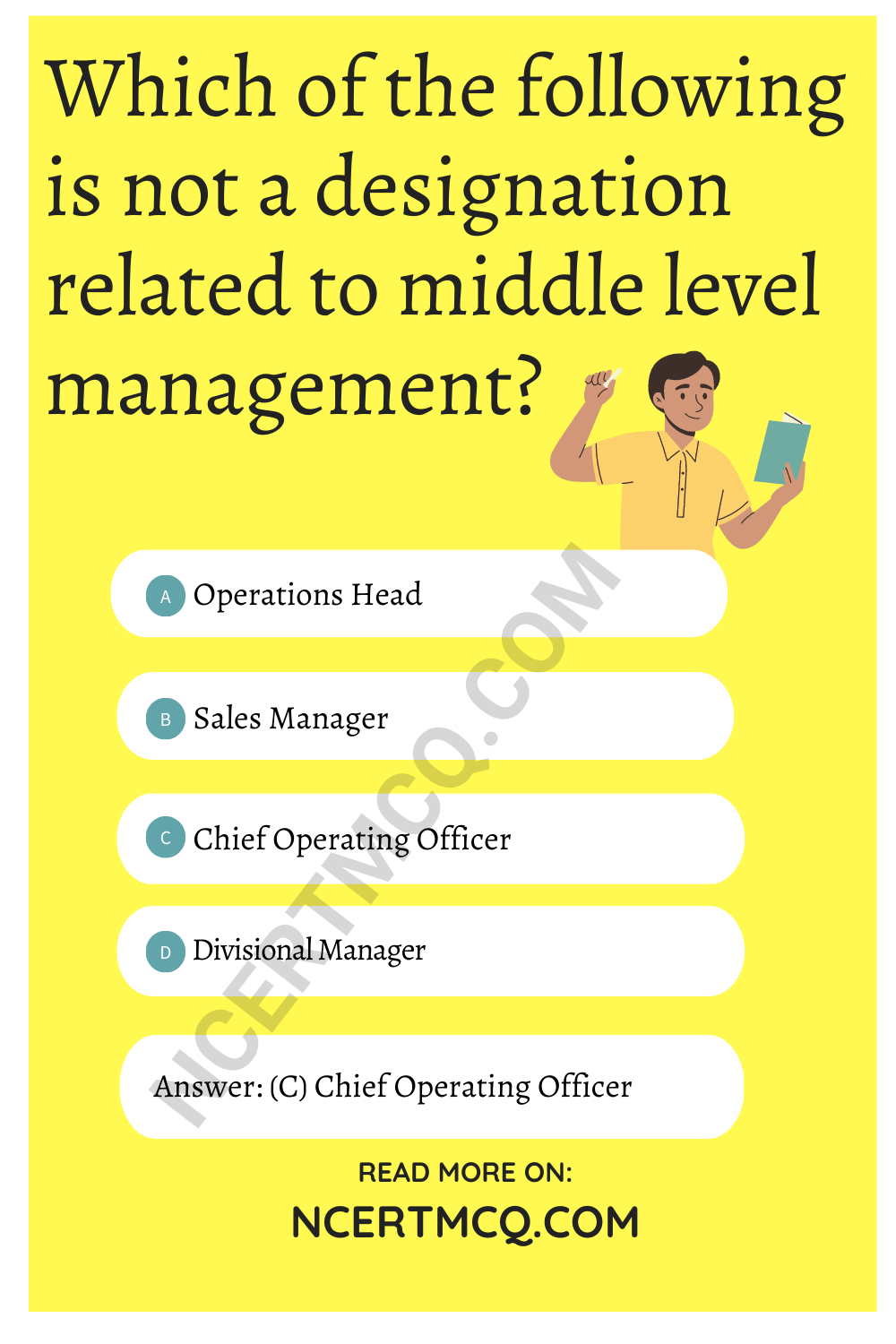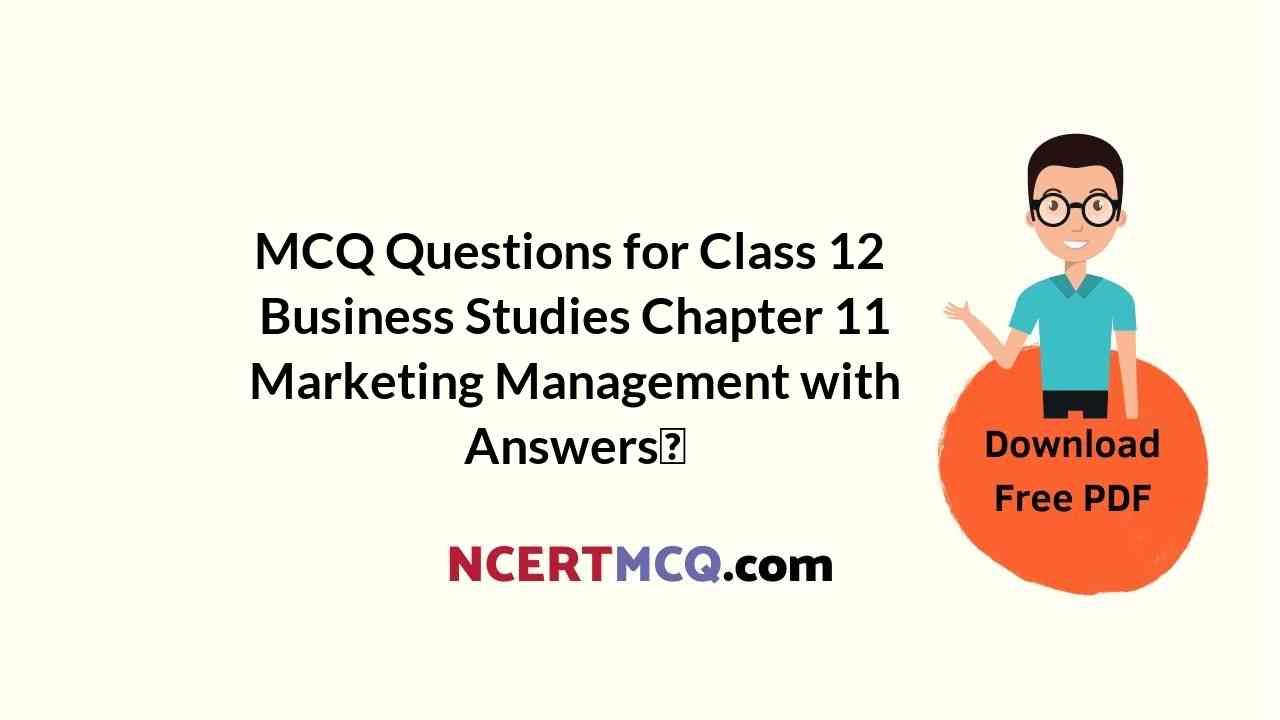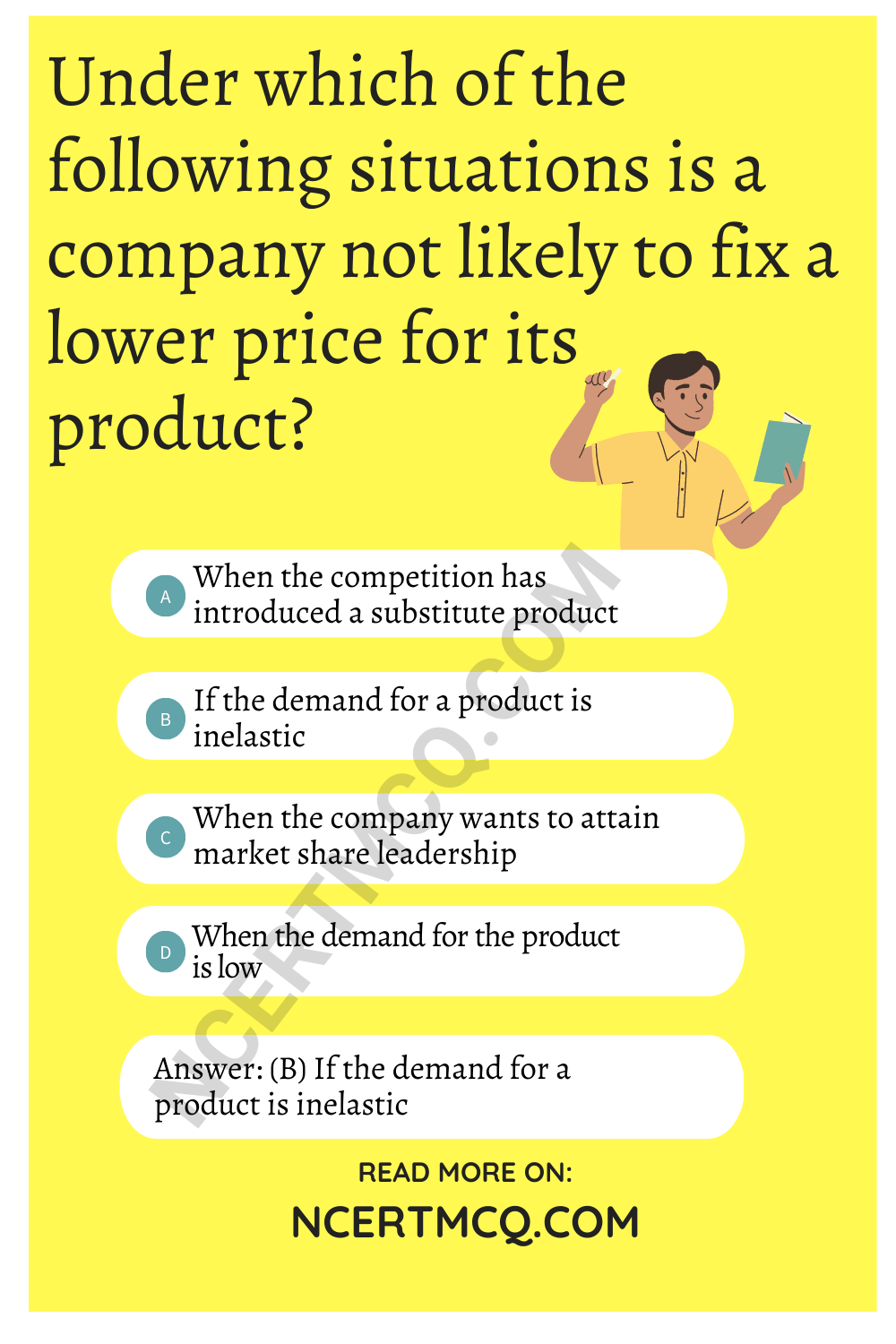Check the below NCERT MCQ Questions for Class 12 Business Studies Chapter 8 Controlling with Answers Pdf free download. MCQ Questions for Class 12 Business Studies with Answers were prepared based on the latest exam pattern. We have provided Controlling Class 12 Business Studies MCQs Questions with Answers to help students understand the concept very well.
Class 12 Business Studies Chapter 8 Controlling MCQ With Answers
Business Studies Class 12 Chapter 8 MCQs On Controlling
Question 1.
Which one of the following is not a feature of controlling?
(a) Continuous process
(b) Action-oriented
(c) Keeping employees busy
(d) Pervasive function
Answer
Answer: (c) Keeping employees busy
Question 2.
Which one of the following is not an importance of controlling?
(a) Better coordination
(b) Better use of resources
(c) Better planning
(d) Better grievance handling
Answer
Answer: (d) Better grievance handling
Question 3.
Which one of the following is a step of controlling?
(a) Assessing personnel required
(b) Taking corrective action
(c) Assessing environment
(d) Taking disciplinary action
Answer
Answer: (b) Taking corrective action
Question 4.
___ is the process of ensuring that actual results are in accordance with planned results.
(a) Controlling
(b) Coordinating
(c) Planning
(d) Directing
Answer
Answer: (a) Controlling
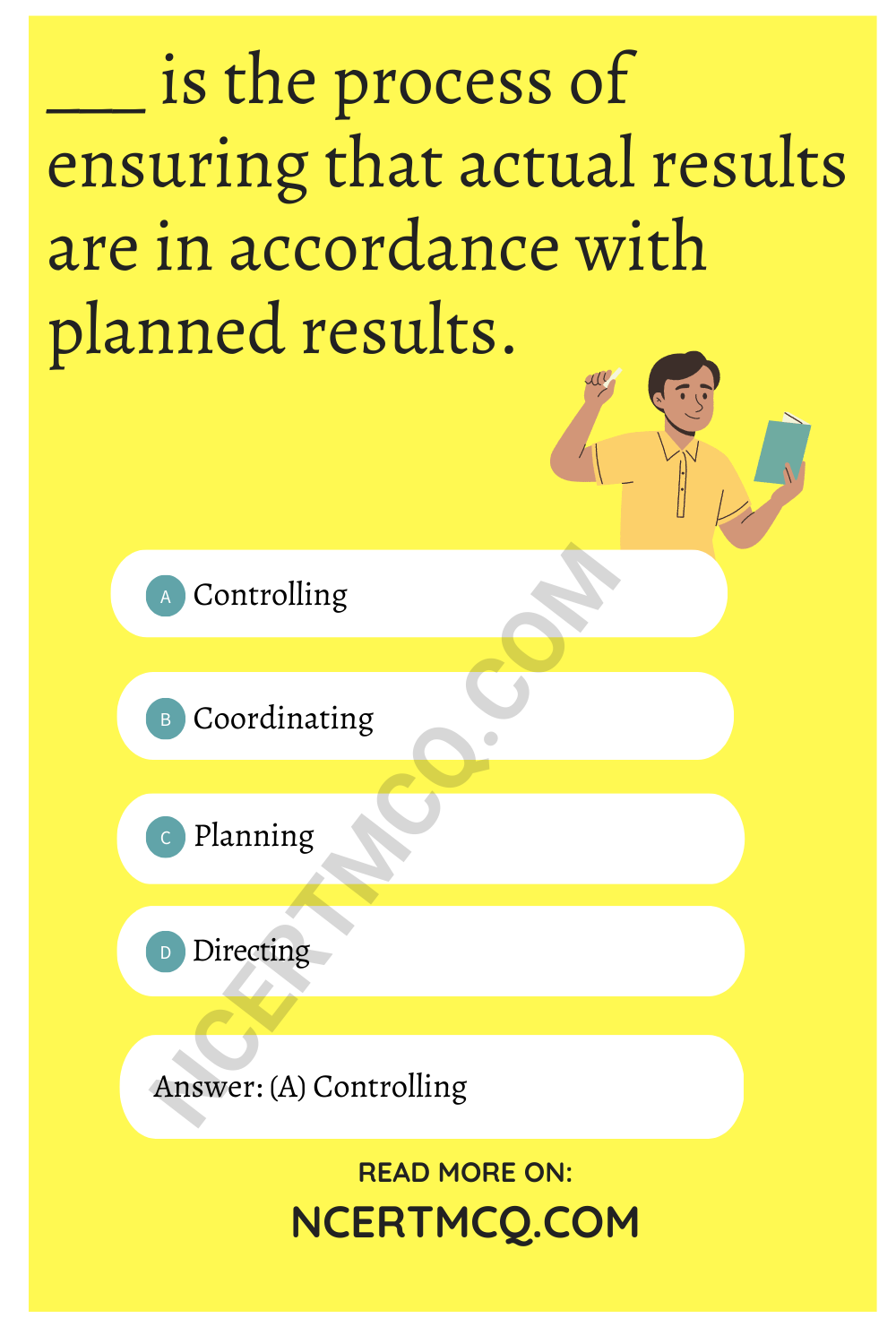
Question 5.
___ is the focus point for a manager while controlling, as controlling at every step is not possible
(a) Controlling
(b) Coordinating
(c) Critical point control
(d) Both (a) and (b)
Answer
Answer: (c) Critical point control
Question 6.
Controlling is ___.
(a) Forward looking
(b) Backward looking
(c) Continous process
(d) All of these
Answer
Answer: (d) All of these
Question 7.
In a marketing firm, the Financial Manager pays more attention towards an increase of 3% in the marketing cost as compared to a 15% increase in the courier expenses. Identify the concept being used by the manager.
(a) Management by exception
(b) Critical point control
(c) Corrective action
(d) None of the above
Answer
Answer: (b) Critical point control
Question 8.
Reducing the workers, absenteeism in a factory by 20% is an example of
(a) Quantitative standard
(b) Qualitative standard
(c) Deviation
(d) None of the above
Answer
Answer: (a) Quantitative standard
Question 9.
The need for the controlling function is felt in
(a) Business organisations
(b) Political organisations
(c) Social organisations
(d) All of the above
Answer
Answer: (d) All of the above
Question 10.
When the deviations between the actual performance and the planned performance are within the limits
(a) A limited corrective action is required
(b) No corrective action is required
(c) A major corrective action is required
(d) None of the above
Answer
Answer: (b) No corrective action is required
Question 11.
The comparison of actual performance with the planned performance becomes easier if the standards are set in
(a) Qualitative terms
(b) Quantitative terms
(c) Either of the above
(d) None of the above
Answer
Answer: (b) Quantitative terms
Question 12.
Identify the correct sequence of the steps involved in the controlling process.
(a) Measurement of actual performance, Taking corrective action, Setting performance standards, Comparison of actual performance with standards, Analysing deviations
(b) Comparison of actual performance with standards, Setting performance standards. Measurement of actual performance, Analysing deviations, Taking corrective action
(c) Setting performance standards, Measurement of actual performance, Comparison of actual performance with standards, Analysing deviations, Taking corrective action
(d) Taking corrective action, Measurement of actual performance, Comparison of actual performance with standards, Analysing deviations, Setting performance standards
Answer
Answer: (c) Setting performance standards, Measurement of actual performance, Comparison of actual performance with standards, Analysing deviations, Taking corrective action
Question 13.
Deviations are said to be positive in nature when
(a) Planned performance is more than the actual performance
(b) Actual performance is more than the planned performance
(c) Both planned and actual performances are same
(d) None of the above
Answer
Answer: (b) Actual performance is more than the planned performance
Question 14.
The controlling function is performed by
(a) Top level management
(b) Lower level management
(c) Middle level management
(d) All of the above
Answer
Answer: (d) All of the above
Question 15.
Om Prakash has set up a small business unit for the manufacturing of detergent. In order to market the detergent in the local residential areas, he has appointed a team of ten salesmen. Each salesman is expected to sell at least 200 units of the detergent within a week’s time. Identify the point of importance of controlling being highlighted in the above case.
(a) Controlling helps in judging accuracy of standards.
(b) It ensures efficient use of resources.
(c) It helps in improving employee motivation.
(d) It facilitates co-ordination in action.
Answer
Answer: (c) It helps in improving employee motivation.
Explanation:
By making employees aware of the expected performance
Question 16.
Which of the following is not an importance of controlling function?
(a) It ensures order and discipline.
(b) It restricts co-ordination in action.
(c) It helps in judging accuracy of standards.
(d) It improves employee motivation.
Answer
Answer: (b) It restricts co-ordination in action.
Explanation:
It facilitates co-ordination in action
Question 17.
Yash runs a logistic company. The Tour Incharges of each trip in the company are expected to submit a report to the Event Manager on the completion of every trip. Identify the step in the controlling process being described in the above lines.
(a) Setting of standards
(b) Measurement of actual performance
(c) Taking corrective action
(d) Analysing the deviations
Answer
Answer: (b) Measurement of actual performance
Question 18.
Controlling is known as a backward-looking function because
(a) It relates to future course of action.
(b) It is like a post-mortem of the past activities
(c) To find out deviation, it aims at improving future performance.
(d) All of the above
Answer
Answer: (b) It is like a post-mortem of the past activities
Question 19.
In an artificial plants manufacturing unit, the standard output set for a worker is 50 units per day. Dinesh produces 48 units in one day. In the given case, the value of deviation is
(a) -2
(b) + 2
(c) 98
(d) None of the above
Answer
Answer: (a) -2
Question 20.
This concept of Control Management is based on the belief that if you try to control everything, you may end up controlling nothing.
(a) Critical point control
(b) Key result areas
(c) Management by exception
(d) Deviations
Answer
Answer: (c) Management by exception
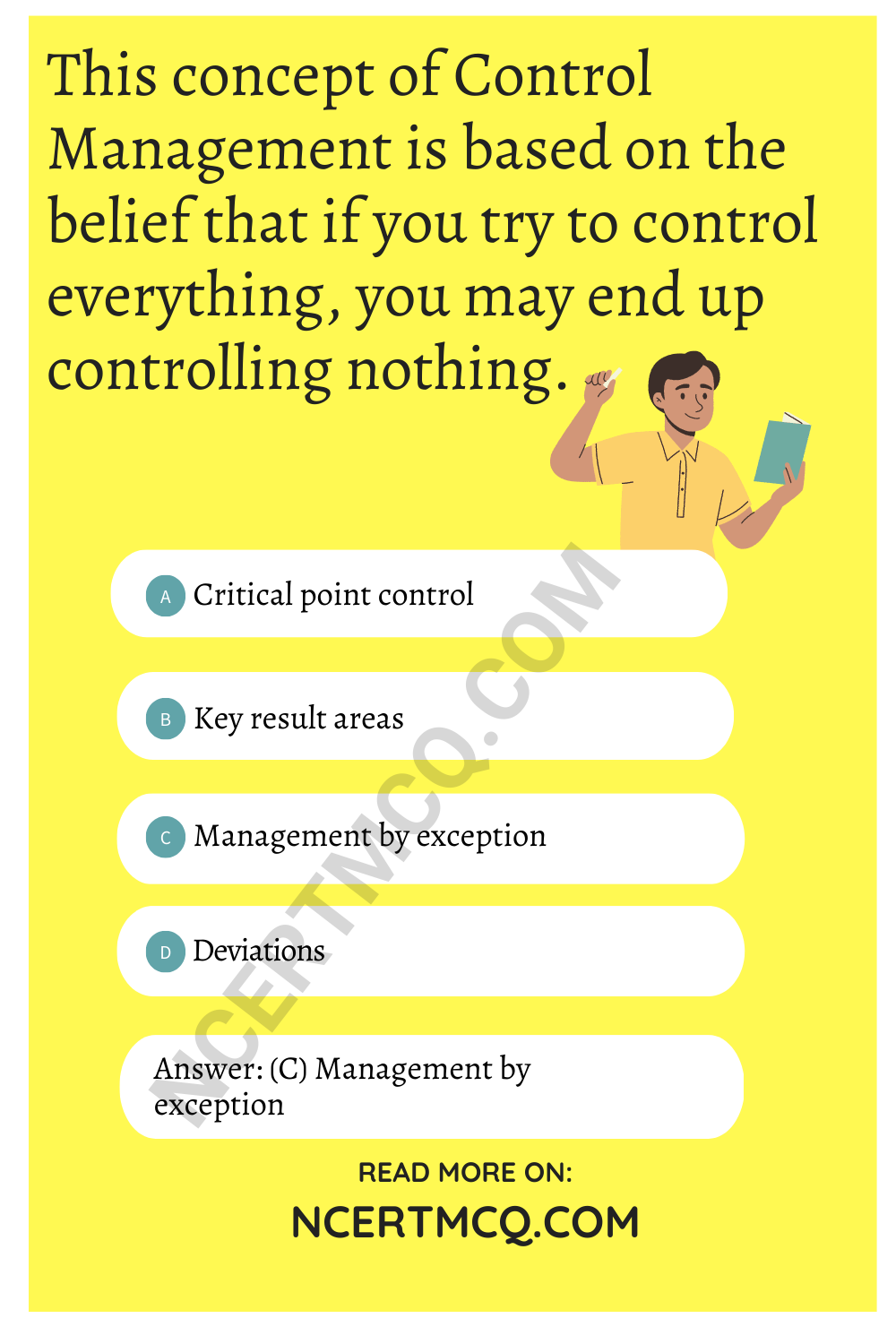
True or False
State with reasons whether the following statements are True or False.
1. Controlling helps in achieving organisational objectives.
Answer
Answer: True; by suggesting corrective action, if required.
2. Control by action involves reporting of exceptional deviation between actual performance and standard performance to top management.
Answer
Answer: False; management by exception involves such reporting.
3. Management by exception is controlling performance in key result areas.
Answer
Answer: False; controlling performance in key result areas is critical point control.
We hope the given NCERT MCQ Questions for Class 12 Business Studies Chapter 8 Controlling with Answers Pdf free download will help you. If you have any queries regarding Controlling CBSE Class 12 Business Studies MCQs Multiple Choice Questions with Answers, drop a comment below and we will get back to you soon.
